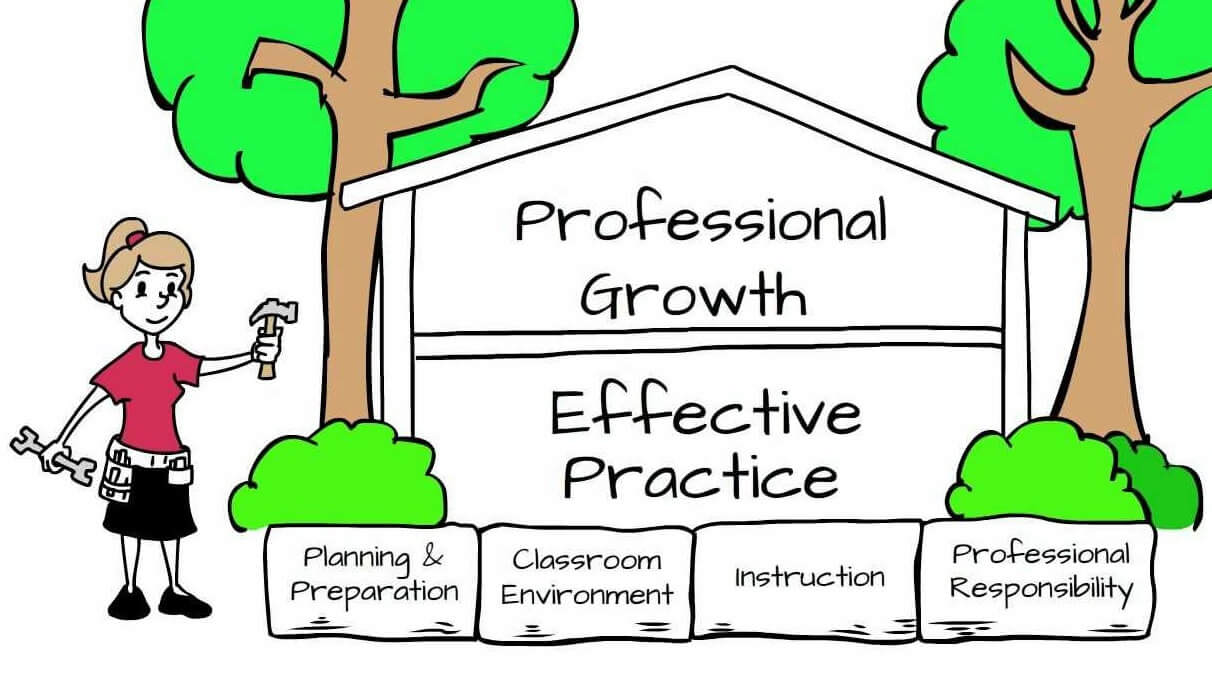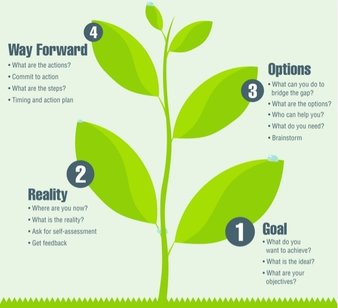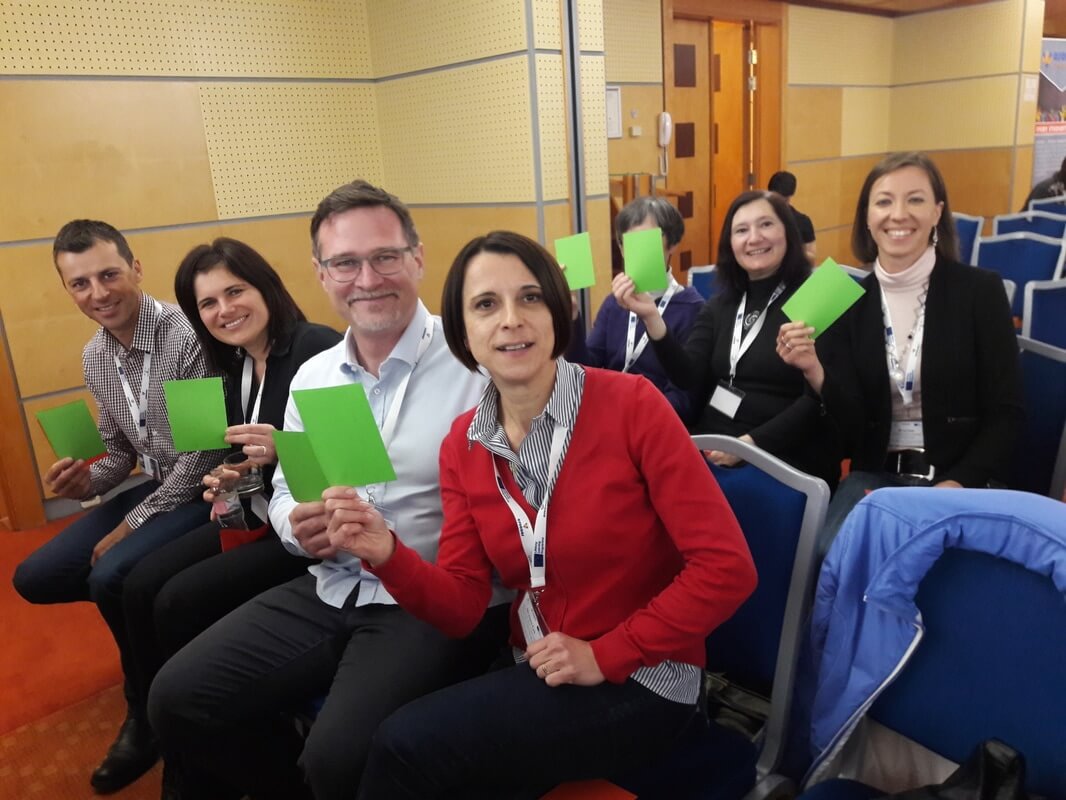|
The comparative overview of national policies on teacher careers across Europe, which covers 43 European education systems, provides an analysis of different aspects of the teaching profession. The report focuses on primary and general secondary education.
The main themes include:
Link to the publication: here. Entrepreneurial education seeks to support students to develop the capacity to do new, creative, innovative things that add value for themselves and the wider community, in response to opportunities or needs. Find ideas, how can you foster entrepreneurial mind in your classroom. Here is the handbook of different ideas from the field.
The handbook presents several wonderful practices for entrepreneurial teaching, including:
A practical guide on strategic internationalisation in Vocational Education and Training The aim of this guide is to assist in the strategic planning of international activities in VET and to help in defining the role internationalisation plays in the development of vocational education and training, VET qualifications and VET systems.
It is almost the last part of the application form but it does not mean it is less important. Far from it. The evaluation demonstrates to what extent the objectives and desired outcomes were achieved at the different stages of your Erasmus+ mobility project’s lifecycle. Here is a guideline on how to prepare effective evaluation of your project.
#1 Assessment plan. Systematically done evaluation can actually simplify the development of the project, completion of the application form and reporting. But you need an effective plan to simplify it. In the assessment plan define and prioritise the project objectives. It is impossible to evaluate everything. Select the areas you want to focus on. Define who will manage the evaluation of your project impact and dissemination. It is good to have a responsible person who will monitor project implementation. It might be project coordinator or some other team member. State what you’re assessing and set concrete indicators such as examples below. In the next step choose an appropriate assessment method and tool for collecting and analysing data. After data collection analyse the results and ask yourself the right questions, e.g. what does it mean if the participants established contacts but no new partnership occurred out of the network. Act consequently, e.g. following this analysis we will organise a brainstorming session on developing new project idea and after encourage participants to write their new contacts and propose project idea to them. Additionally, you will have to present intermediary reports and final report of the project to your national agency. Having good assessment plan will help you to write efficient reports. #2 Critical events to evaluate. In order to ensure holistic evaluation mind different levels of evaluation, short-term and long-term impact, and all stages of the project. Levels of evaluation refers to relevant people who benefits from the project: students, teachers, school, teacher training provider and other stakeholders depends on your project objectives. In some cases, you might include parents, local community or administrative staff. Usually applicants define short-term impact indicators such as number of training hours or number of satisfaction with the in-service training. But remember long-term impact and how will you measure and show it. Plan evaluation activities for instance 3 or 6 months after the mobility. Assess what participants of the mobility actually use in their everyday practice. Since high quality training providers assess the effectiveness of their courses as a follow-up activity after a certain period upon the course ending, you can ask them to share information with you. Plan also to evaluate different stages of the project and not just the mobility itself. Holistic evaluation covers assessment of the project management, preparation of the participants, mobility period, dissemination, and effects of the mobility after the mobility is concluded. #3 Examples of the indicators. Ideas for indicators below are adopted from the MICE-T project (www.mice-t.net). Evidence of impact on students:
Evidence of impact on teachers:
Evidence of impact on school:
#4 Tools for evaluation. Data collection methods and tools depends on the impact you want to show. Suggestions below serve as an inspiration for your project:
Criticism may sound like something negative but it’s not necessarily a bad thing. In fact, it can be very beneficial, if it’s done in the right way. It helps students to learn from their mistakes and motivates them to improve their skills and expand their knowledge. But the question is how to criticize effectively? We prepared some tips on how to give a constructive feedback:
1. Criticize behavior, not person Has it ever occurred to you that you gave critique with the best intention but it wasn’t received well? Often, especially when filled with emotion, people tend to criticize others on a personal level instead of criticizing their behavior in a particular situation. Student, who has been criticized, may have felt he was personally attacked and consequently acted defensively. Imagine you are being told you are boring, just because some of your coworkers didn’t like the way how you teach some topics in the classroom. This kind of critique would only make you feel bad about yourself, but it wouldn’t be very useful. It would be much better if you were told that they didn’t like some of your classes and offered an explanation. In that case you could see where the problem is and do something about it. For the same reason you should be careful and criticize particular behavior of your students. Replace statements like “You are lazy.” or “You are reckless.” with “What you did in that situation was irresponsible.” 2. Be specific, focus on the situation Another important thing, when giving critiques, is to be specific. If you tell your student that he got a low grade because you didn’t like his essay or you thought his essay was really bad, it won’t be much of a help to him. Be more specific and offer him a critique like: “I had to give you lower grade because you focused on a wrong topic. You should have written about characters in the book, but you wrote your whole essay about the plot. It might be better if next time you write a concept of your essay before you start writing. I could help you stick to the rules and keep in mind what is the purpose of the essay.” Make sure your critiques are not general, but as specific as possible. Avoid statements like: “You are always late”, “This is just not your thing” or “You never listen to instructions when I tell them.” Focus on the situation and break it down to some specific key points. 3. Try the “Sandwich method” When dealing with students who are less confident or feel insecure, it could be even harder to give critique. You don’t want to hurt their feelings but you still should somehow tell them where they performed poorly or behaved inappropriately. That’s where the sandwich technique comes in: At first, provide a positive feedback. Give them a compliment on something they did well recently, tell them you appreciate their effort. Provide a critique. Make sure you criticize specific situation or behavior. End it with a compliment. When using the sandwich method, be honest and make sure your critique is not misunderstood. Critique, in combination with compliment, usually motivates people to improve their performance, which is why it’s beneficial to use this method also with students who are not necessarily insecure or unconfident. 4. Give recommendation on how to improve To encourage your students to improve their work, help them find out what they can do about it. Ask them what do they think and then point them into the right direction. Again, when giving suggestions, be specific. Giving recommendation after critique is what makes your feedback constructive. With doing so, you clearly reveal your expectations and show them how to reach them. Although it might not be easy to criticize your students or coworkers, critiques could be very beneficial. Just make sure you do it right! Employability affects both personal and professional fields and it needs time and room in order to be well processed. Students should think about their employability when they are still in the school system. But of course we can’t force them. Here the role of teacher is crucial. How can teacher work on it? How can teacher increase the employability of his students?
In Primera we borrow the approach to employability development by The University of Queensland:
The model is focused on learning from experiences to develop employability and recognising how that learning makes people more effective in the workplace. School teachers play an essential role on it since they have to support students in getting familiar with such important model. The method we borrowed by the Queensland University is the SEAL process of self reflection.
But technically how a teacher can support students in developing and increasing their employability skills? The role of teacher lies in creating an environment that support students in this learning-transformative process in every phase:
Once students have identified the learning they have gained from their experiences, they can better realise their own employability and determine just what makes them particularly employable. This is a great beginning for starting to think to their career. They won’t feel so disoriented and frustrated in moving their first steps in the labour market. Key-insights:
Matteo Paradisi Learning and development are not typical associations with the word “summer”. Summer is time to relax and recharge. It’s beneficial to get away from daily stressors and take time to engage in activities you enjoy.
But summer is also a perfect opportunity to do something for your professional development in an enjoyable way. Maybe you’ll find inspiration in one of the following ideas: 1. Do what you’re passionate about. What do you enjoy doing but you rarely have time for it? Is it traveling, sport, outdoor activities, trying new recipes, reading, painting, maybe some do it yourself crafts? Personal well-being can also be a powerful motivation for developmental activities. When you relax and engage in activities you enjoy, you might get some ideas for activities that will enrich your next school year’s curriculum. Additionally, studies have shown that taking time for yourself not only reduces stress but also increases work engagement and performance of teachers. So take a vacation. Relax. Spend time with your friends and family. Try something new. And most importantly, do what makes you happy! 2. Set goals for next school year. Think about what you want to accomplish next year and how is this beneficial for your students. From which activities could your students benefit the most? What will keep them motivated? Maybe implementation of some new student projects or cross-curricular teaching? Make sure you regularly write down your ideas and set goals that will motivate you through the next school year. You can help yourself with SMART goal setting technique. 3. Keep your knowledge in shape Which skills would you like to acquire in near future? Do you feel you are lacking some knowledge you could really use next year? Attend some summer seminar courses and strengthen your skills and knowledge. Check if there are some teaching conferences nearby. Find some well-established websites and journals and throw yourself into reading. There are plenty of opportunities, go for them! 4. Evaluate your classroom activities Which teaching methods were effective last year and why? Which methods and activities deserve some improvement? What challenges are you going to face next year? What can you do about them? Think about it and write everything down! These questions will help you identify areas that need your attention. Equip yourself with tools and knowledge and ask your colleagues for some tips. And when you get some ideas, don’t forget to share your knowledge with them! Two Heads Are Better than One: Peer Coaching as a Technique to Improve Teaching and Learning6/21/2017 How often do you discuss new teaching ideas with your colleagues? How often do you work in groups or watch one another work with students? How often do you think together about the impact of your behavior on students?
Have you ever heard about peer coaching? Peer coaching is a powerful tool for professional development, which is mainly used in the fields of education and human resources management. It is defined as a process by which professionals get together and form collaborating team for providing personal and professional support to each other. In contrast to performance coaching, which is focused on achieving goals, improving skills and providing feedback, peer coaching doesn’t include evaluation of your performance and giving advice. It is based on the assumption that professionals benefit more from discussing new ideas together, building trust, providing support and observing each other than from just simply following advice. In the peer coaching process, professionals often switch between the role of a peer coach and the role of a peer client. Benefits of peer coaching:
Peer Coaching and the GROW Model GROW is a simple and very effective coaching model, that is used to structure peer coaching sessions. The model includes 4 different phases: Goal: setting a specific, measurable attainable, realistic and timely goal Reality: describing and examining the current reality Options: exploring and discussing options, identifying possible obstacles Way forward: committing the actions, reviewing the progress Interested in peer coaching? Check out our Peer coaching training course! In the course you will learn:
That was the title of the final conference of CroCooS project – Cross-sectoral cooperation focused solutions for preventing early school leaving. The three-days high-level conference was focused both on reflections and policy recommendation of the project, full of schools’ stories and best practices which were delivered by the pilot actors – mentors, schools and teachers. The aim of the CroCooS – Prevent dropout! project is to develop an institutional level early warning system (EWS) for combating ELET (early leaving from education and training) based on collecting and analysing interventions having been successful in the partner countries. The proposed EWS is piloted in three countries, including 15 different schools. What are important risk factors? The CroCoos expert team reported 6 most important distress signals that indicate students at risk of leaving school early and recommend monitoring these at an institutional level. Official standards 1. absenteeism (unjustified) 2. deteriorating achievement (Maths, Lagugage) 3. grade repetition (form of punishment) Behaviour related 4. being bored in school (seldom followed up) 5. being bullied/bullying 6. drastic behavior changes What can a school do? 1. Designing a friendlier environment. Some schools in the project used the funds to design a place for the students to use in their free time and it had a great impact on them. Especially for the students that are living far away and come early or have to leave late, it is important to have nice and welcoming environment to wait for the classes to start or to socialise with classmates after school.2. Approachable teachers. Not just the environment, also the relationship part is very important as you may already know. A vocational school from Kranj has designated a special task force of teachers, that students can go to, when they feel they need to talk to someone. The students were notified about it, by receiving special notes in school. Translation of one of the card: When you are overwhelmed.. When things are note going well in school.. When it gets difficult for you.. When home is not all good.. When you alone can’t find a solution.. When you have to tell someone.. Sometimes it is enough just, that you share your crisis with someone. That is why, we have a special group of teachers on our school that are here to help the students in distress. We are here for you to listen and support you. Everything that is said will stay between us.) 3. Strengthen the feeling of belonging An interesting thing an agriculture school from Serbian Zrenjanin has done in order to welcome their freshmen students is, they made special welcome cards for each individual including their picture, name and their rights and duties. They present them during an official welcome ceremony. 4. Cooperation – everyone is good at something. The last that we will describe is a community garden, made and processed together by students and teachers. That was a good practice presented by a Secondary school Ravne, where they not only took care of the garden for the whole year, but also made some products from the crops at harvest time and gave them as gifts at parents teacher meetings. Would you like to get educated more on Preventing Early School Leaving? Here at Eramus+ courses by Primera we have a course especially designed for learning more about Prevention and what can be done. For more details click here. Why many students feel unmotivated in their own studies at school? That is a tricky point and sometimes teachers simply can’t understand what is going wrong with them. One of the main reason of that is the scarce appeal of learning material: they feel that what they are learning is not connected with different jobs’ requirements. Moreover, sometimes they feel that they are trained for jobs that will disappear in 10 years. And by all means they know that after finishing the school they must face one of the biggest challenge in the life: find a job.
According Future Skills 2020 Report (by Institute For The Future), future work skills required by the labour market have some important implication for the Educational System. Educational organisations at all levels should consider how to adapt quickly in response. Industry 4.0 Study says us that the labour market is going to change quickly and deeply. Are we ready to face it? How can we become/keep employable and run in the new challenges of the world of work? How do we feel in facing one or more transitions during our career? Considering all this, how we as teachers can help students? There is only an answer: increasing their employability. So, let’s talk about employability. What is employability? A lot of people got confused about employment and employability but they are two different words with two different meanings. Employment is about getting a job. And getting a job is just one part of employability (we can consider it as one of the last outcomes). Employability is “a set of achievements – skills, understandings and personal attributes – that make graduates more likely to gain employment and be successful in their chosen occupations, which benefits themselves, the workforce, the community and the economy” (Manzt Yorke, UK Higher Education Academy). Let’s make things more easier through an example. Employment is getting a job in a supermarket (when the student becomes employed: cashier, clerk, saleperson or whatever). Employability is about ability of the student in doing the job. It means being able to perform well in his role in the supermarket. It entails to use in an effective way both technical and soft skills: mathematical competences, communication skills, problems loving, sales skills and so on. The challenge is to use together all these skills in practice working in the supermarket. And being aware about these skills is not enough; student will be really employable only when he is able to use in practice these skills in every situation he is going to face in the supermarket. Key-insight: employability is to be able to DO the job. |
primeraWe empower teachers so they can do their job best. Categories
All
LINKSPrimera's practical handbook for writing high quality Erasmus+ mobility projects.
Pan-European Conference on Digital Education Facebook Community. Primera's FB page. Work with us on Erasmus+ KA2 projects: STEP Institute. |
||||||||||||
Erasmus+ by Primera for teachersErasmus+ courses by Primera are dedicated to teachers who value evidence-based and practice-driven training in highly interactive international atmosphere.
OID Ljubljana: E10091479 OID Vienna: E10298896 E: [email protected] T: +386 1 320 28 43 Privacy Policy |
Navigation |
Stay tuned! |
© 2020 Skupina Primera Ltd. All rights reserved.














 RSS Feed
RSS Feed